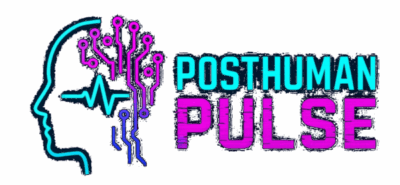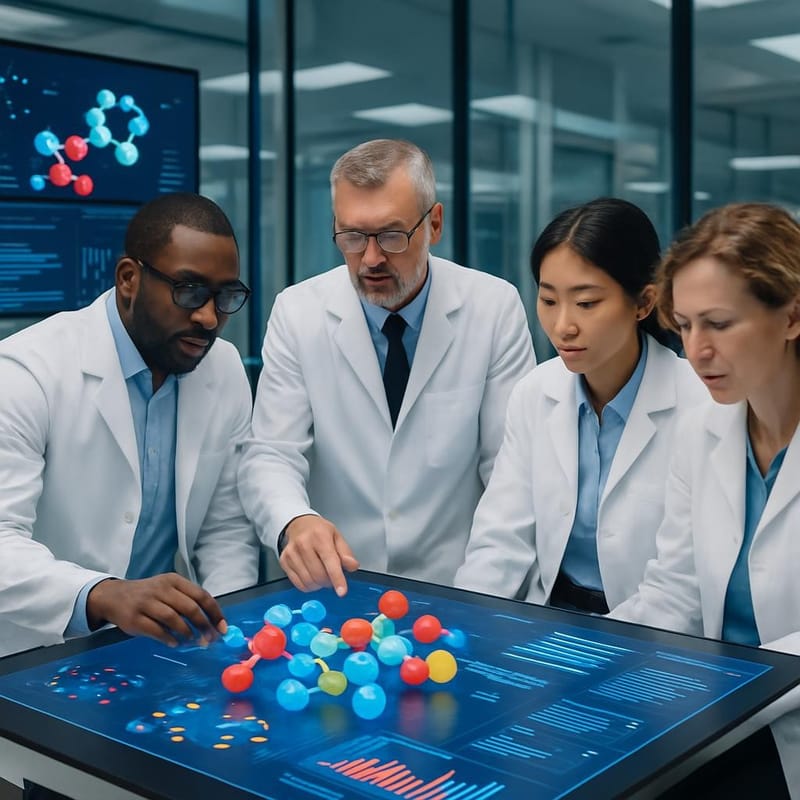A candid look at how this week’s AI advances are transforming drug discovery, clinical trials, and molecular biology—with actionable insights and clear evidence.
AI’s Fast Track: From Data to Life-Changing Therapies
When a team at Cambridge revealed that their AI system had pinpointed potent anti-cancer drug combinations from everyday medications, it sent a ripple of excitement through research labs and hospital boards alike. The lesson is clear: AI can now analyze an ocean of drug data in mere hours, surfacing treatment prospects that would take human teams entire careers to uncover. This is more than a technical leap—it’s a fundamental shift in how life-saving therapies might arise, not only from novel molecules but from a radical reevaluation of what’s already on pharmacy shelves.
Yet this new pace and scale of discovery prompt urgent questions for clinicians, policymakers, and anyone invested in the future of healthcare. Are we prepared for a world where machine-generated hypotheses drive clinical priorities? In this week’s roundup, we unpack the most significant AI advances, focusing on their real-world impact and what lies ahead for innovation-driven professionals.
Redefining Drug Discovery: AI and Human Scientists Find New Cancer Therapies
AI’s role in drug discovery is no longer theoretical. Researchers at the University of Cambridge, working with an “AI Scientist” platform, systematically analyzed tens of thousands of drug combinations to uncover new anti-cancer synergies lurking in plain sight. Their approach wasn’t to invent new molecules; instead, they harnessed the power of repurposing—matching non-cancer drugs, including familiar cholesterol-lowering pills, into unique combinations that proved lethal to cancer cells in vitro (News-Medical.net).
The scale is staggering. As detailed in Cambridge’s official release, “AI scientist suggests combinations of widely available non-cancer drugs can kill cancer cells” (Cambridge Research News). The AI mapped a landscape of possibilities, flagging drug pairs that human scientists then validated in the laboratory. This method dramatically accelerates research and sidesteps years of regulatory and safety hurdles, since these drugs already have established safety profiles.
A senior Cambridge researcher commented, “Repurposing existing drugs could offer a faster route to new cancer treatments.” The implications are immediate: lower costs, faster translation to the clinic, and renewed hope for patients with few treatment options. Still, as with all scientific advances, these findings must undergo rigorous clinical trials before becoming standard care—a necessary step to ensure both safety and efficacy.
This paradigm demonstrates the symbiotic relationship between AI and human expertise: machines generate hypotheses at unprecedented scale, while scientists provide the critical validation and interpretation necessary to move discoveries forward.
From Algorithm to Clinic: AI-Designed Drugs Show Real-World Progress
The story of AI in medicine doesn’t end with repurposing. This week also saw a breakthrough as Rentosertib—the first AI-designed small-molecule drug—demonstrated promising results in a Phase IIa clinical trial for idiopathic pulmonary fibrosis (IPF). Developed by Insilico Medicine’s AI platform, Rentosertib targets the TNIK protein, a key player in lung fibrosis. Early data, published in Nature Medicine and summarized by News-Medical.net, showed improvements in lung function and manageable side effects in trial participants.
What truly sets this apart is not only the successful trial outcome but the speed at which it was achieved. The AI-driven pipeline shrank the timeline from discovery to clinical testing by several years—compressing a traditionally slow, expensive process into a nimble, data-driven sprint. The practical impact is profound: patients with hard-to-treat diseases like IPF could see new therapies reach clinics much sooner than before.
A medical science editor notes, “Rentosertib is the first AI-designed drug to reach this stage in human studies.” This milestone signals a shift in what’s possible—not just in theory, but in clinical practice. Drug developers and clinicians are already recalibrating their R&D strategies, realizing that AI-powered approaches are no longer optional but essential for staying competitive in the pharmaceutical industry.
The convergence of AI’s analytical prowess and domain expertise is becoming the new normal for drug development—speeding up the process without sacrificing the rigor required for patient safety.
AI-Guided Chemistry: Real-Time Control Inside Living Organisms
AI’s transformative reach now extends beyond drug discovery into the realm of programmable biology. In a recent study summarized by Phys.org, a team led by Wang Chu and Chen Peng demonstrated an AI-guided chemistry approach that enables on-demand protein activation within living mice. Using sophisticated machine learning algorithms, researchers designed custom chemical probes capable of being triggered remotely—switching specific proteins on or off with pinpoint precision.
This capability is far more than a laboratory novelty. It opens up an entirely new toolkit for both basic research and potential therapies, such as targeted drug delivery and real-time modulation of disease pathways. Imagine a treatment protocol where protein activity in a patient can be adjusted on the fly, responding dynamically to the course of a disease or a patient’s unique biology.
As noted by the authors, “Machine learning was used to design molecules for precise, real-time biological control.” For the fields of synthetic biology and therapeutic development, this breakthrough means new ways to probe and manipulate living systems. The prospect of “smart” therapies—where interventions are as adaptive and responsive as the diseases they target—is quickly moving from science fiction to scientific reality.
How AI Is Rewriting the Rules for Biomedical Innovation
The convergence of these advances points to an unmistakable reality: AI is now an indispensable partner in the life sciences, fundamentally reshaping everything from hypothesis generation to clinical translation.
What does this mean in practice?
For medical researchers and industry leaders, AI is moving from buzzword to backbone. The Cambridge “AI Scientist” model exemplifies how machines can generate research ideas at a scale and speed that would overwhelm even the largest human teams. The practical result is more opportunities identified, faster, and a higher probability of clinical impact.
The AI-driven pipeline, as seen with Rentosertib, compresses years of preclinical work into months, directly benefiting patients waiting for new therapies. Meanwhile, AI-guided chemistry blurs the line between research tool and therapeutic platform, suggesting a future where disease management is more adaptive and personalized than ever before.
Where do these trends intersect with broader topics?
- Drug repurposing: AI’s ability to find new indications for established drugs could dramatically lower development costs and expedite regulatory approval.
- Human-AI collaboration: The most successful approaches blend machine-led hypothesis generation with human validation and oversight.
- Clinical translation: Early-stage research is reaching clinical trials faster, but robust validation remains essential to ensure new therapies are both safe and effective.
What’s missing?
While the headlines are inspiring, gaps remain. Detailed technical data—such as specific AI model architectures and raw datasets—are still often behind paywalls or institutional access barriers. There’s also a need for more direct expert commentary in public-facing summaries to help contextualize both the opportunities and limitations.
Looking ahead, regulatory frameworks and ethical considerations will play an increasingly crucial role as AI-driven discoveries move from lab to clinic. The consensus across all sources is clear: AI isn’t just augmenting biomedical research—it’s rewriting the rules of what’s possible.
TLDR: Key Takeaways for Decision-Makers
- AI-driven drug discovery is producing actionable results: New anti-cancer therapies are being identified and advanced rapidly.
- Repurposing existing drugs with AI can deliver faster, more cost-effective treatments: This approach leverages the known safety profiles of established medications.
- AI-designed drugs like Rentosertib are already in human clinical trials: Early results show promise for hard-to-treat diseases.
- AI-guided chemistry is enabling real-time control of biological processes: This opens new frontiers for precision medicine and programmable therapies.
- The greatest breakthroughs come from combining AI’s scale with human expertise: This synergy speeds up research while safeguarding scientific rigor and patient safety.
Memorable Insights from the Week in AI
- “Repurposing existing drugs could offer a faster route to new cancer treatments.” (Cambridge Research News)
- “Rentosertib is the first AI-designed drug to reach this stage in human studies.” (News-Medical.net)
- “Machine learning was used to design molecules for precise, real-time biological control.” (Phys.org)
Key Stats at a Glance
- Cambridge AI analyzed tens of thousands of drug combinations for anti-cancer effects.
- AI-designed drug Rentosertib advanced to Phase IIa clinical trial—an industry first.
- AI-guided chemical probes enabled on-demand protein activation in living mice.
Learn More
- Cambridge’s AI Scientist Pinpoints New Cancer Drug Combos – In-depth summary of the AI-human collaborative discovery process.
- Official Cambridge Research News Release – Institutional context and further background.
- AI-Designed Drug in Clinical Trial – Details on Rentosertib’s clinical progress.
- AI-Guided Chemistry for Real-Time Protein Control – Technical exploration of programmable molecular tools.
Want more like this in your inbox? Subscribe for weekly AI research briefings and join the conversation below. These are the breakthroughs shaping medicine’s next chapter.

